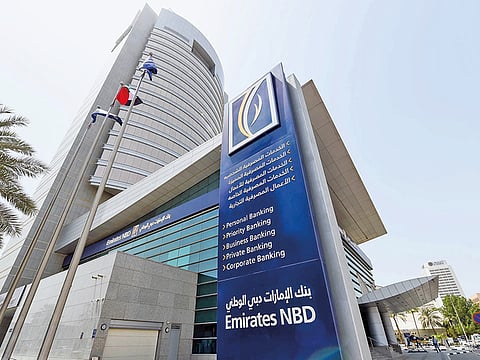Top UAE banks’ profits recover on easing provisions and economic recovery
Leading banks achieved double-digit growth in H1-21 net profits

Dubai: Profits at large UAE banks rose during the first six months of 2021 after a modest improvement in the operating environment led to lower loan-loss provisions, according to rating agency Moody’s.
Data compiled by the rating agency showed the largest four UAE banks such as First Abu Dhabi Bank, Emirates NBD, Abu Dhabi Commercial Bank and Dubai Islamic Bank accounting for 77 per cent of UAE banking assets, reported a combined net profit of $4 billion for the first-half of 2021, up 17 per cent compared with the same period last year.
Shrinking provisions
Lower provisioning is the single largest reason for the improved profits. The banks provisioning fell by 38 per cent in the first-half of 2021, as the economy recovered.
While the full impact of the pandemic on banks’ asset quality will not be clear until the central bank’s Targeted Economic Support Scheme (TESS) is withdrawn.
Combined non-performing loans of the four banks have increased from to 6.2 per cent as of June 2021 from 5.2 per cent as of June 2020. At the same time, coverage moderately declined to still solid levels of 83 per cent.
“We expect bottom-line profitability to gradually improve over the next 12 to 18 months as banks ease their provisioning efforts. However, provisioning could potentially pick up once again when the central bank’s loan repayment deferral program TESS ends, potentially resulting in a rise in problematic loans as distressed customers face repayment pressures due to the pandemic. A return to pre-pandemic levels of profitability is likely in 2022 or 2023,” said Nitish Bhojnagarwala Vice- President and Senior Credit Officer at Moody’s.
According to Moody’s, easing pandemic restrictions, a strong vaccination roll-out, renewed real-estate activity (particularly within the villa segment), and increased optimism regarding upcoming projects such as Expo 2020 all helped to boost confidence.
All top four banks achieved double-digit growth in bottom-line profits, delivering an aggregate return on assets of 1.2 per cent in the six months to June 2021, up from 1.1 per cent in the same period last year (1 per cent excluding acquisitions impact).
We expect bottom-line profitability to gradually improve over the next 12 to 18 months as banks ease their provisioning efforts. However, provisioning could potentially pick up once again when the central bank’s loan repayment deferral program TESS ends.

Pressure on interest income
H1-21 data shows net interest income declined, largely due to a combination of low interest rates and muted loan growth. Combined net interest income for the four banks was Dh21 billion as of June 2021, down 12 per cent year-on-year.
Aggregate non-interest income accounted for 33 per cent of total operating income for the four banks in the first six months of 2021, up from 27 per cent in the same period in 2020 on the back of increased fee-generating transactions, higher business volumes and a favorable performance in investment portfolios.
“We expect this trend to continue for the rest of 2021 as sentiment and confidence recover and restrictions ease. Rising non-interest income will support banks’ earnings while interest rates are low,” said Bhojnagarwala.
Improved cost efficiency
While the large UAE banks exhibit strong cost-efficiency, cost optimization continues to be a point of focus, as growth remains muted and interest rates low. Still, combined cost-to-income ratios for the four banks remained broadly flat at 31 per cent and while operating costs fell for the group in aggregate, banks’ cost efficiencies differed.
Strong capital buffers
All four banks reported solid capital buffers, supported by stronger retained earnings, lower dividend payouts, and muted growth in risk-weighted assets as they maintain a cautious approach to lending amid ongoing pandemic uncertainty. Their combined Tier 1 capital ratio stood at 15.9 per cent as of June 2021, well above the regulatory minimum.
Sign up for the Daily Briefing
Get the latest news and updates straight to your inbox



